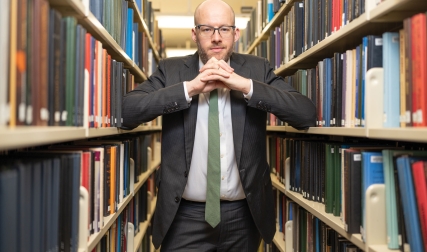“It is hard for me to explain why I have always been interested in minerals—something innate, I suppose,” says Grew, who started collecting rocks as a preschooler in Andover, Massachusetts. His boyhood hobby led to a major in geology and then a Ph.D. from Harvard. “Ed has always been a very modest person, but at the same time very brilliant,” says fellow geology major Woody Thompson ’68, who has collected minerals with Grew since college. “That shows up in his track record of many publications through the years and doing field work all over the world.”
Grew, a research professor of earth and climate sciences at the University of Maine since 1984, has discovered or assisted in the recognition process of 25 newly identified minerals. Two are named for him: edgrewite and hydroxyl-edgrewite. Five were discovered in southern Tibet during the past few years. In 2020 Grew worked with scientists from China, Italy, and Germany to obtain recognition for two nanominerals. In 2022 three more—wodegongjieite, wenjiite, and kangjinlaite—were approved. The researchers used electron diffraction to detect the microscopic inclusions—tiny crystals trapped inside a mineral as it forms—and conducted X-rays and chemical analysis. Grew organized the data (he calls himself a “laboratory manager”) and wrote much of the successful proposal to the International Mineralogical Association’s Commission on New Minerals, Nomenclature and Classification.
“It’s quite a procedure to get a potentially new mineral approved,” says Grew. “You have to determine what it’s made of and what its crystal structure is and provide evidence that it has never before been found naturally.”




